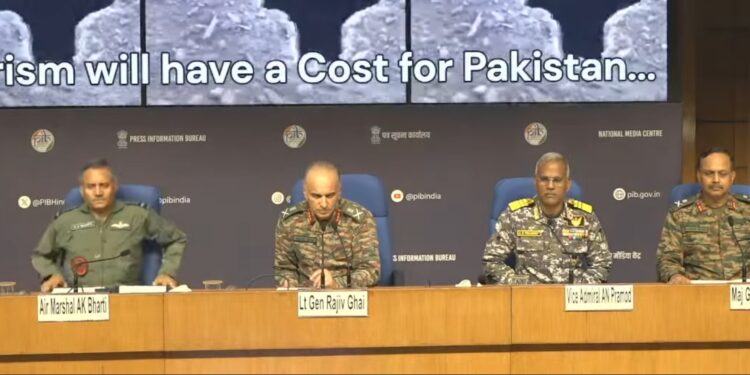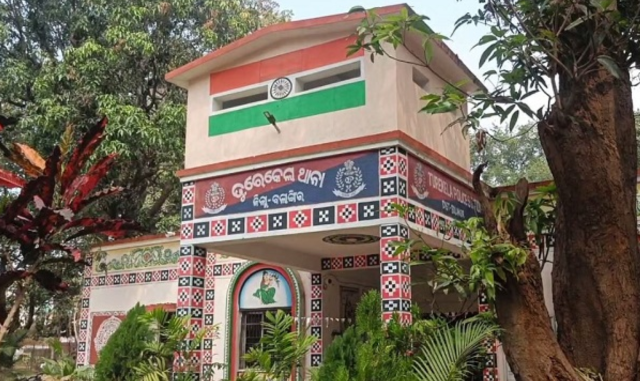On the night of May 7, 2025, India launched Operation Sindoor, a meticulously planned and audaciously executed military operation targeting terrorist infrastructure across the border in Pakistan. The operation, conceptualised with the explicit aim of punishing perpetrators of terror and dismantling their operational bases, marked a significant escalation in India’s counter-terrorism strategy. With a resolute commitment to avoiding collateral damage, the Indian Armed Forces struck nine confirmed terror camps, including key Lashkar-e-Taiba (LeT) hubs in Muridke and Bhawalpur, sending a clear message: India’s tolerance for cross-border terrorism has reached its limit.
The operation was a response to a relentless drone attack on Indian cities, including Srinagar and Naliya, which began at 22:30 hours on May 8 and continued in waves into the early hours of May 9. India’s robust air defence systems neutralised the threat, ensuring no damage to civilian or strategic targets. In retaliation, India executed a series of coordinated, calibrated strikes on Pakistani military installations, air bases, and terror camps, targeting sites in Lahore, Gujranwala, Chaklala, Rafiqui, Rahim Yar Khan, Sukkur, Sargodha, Bholari, and Jacobabad. The strikes not only crippled terrorist infrastructure but also degraded Pakistan’s military capabilities along the Western Front.
Lieutenant General Rajiv Ghai, Director General of Military Operations (DGMO), revealed during a press briefing this evening that Operation Sindoor was the culmination of months of intelligence gathering and microscopic analysis of the terror landscape across the Line of Control (LoC) in Pakistan-occupied Jammu and Kashmir (PoJK) and parts of Pakistan’s Punjab province. Indian intelligence agencies identified numerous terror camps, though some were found abandoned, likely vacated in anticipation of Indian retribution. Nine camps, however, were confirmed active, with Muridke—LeT’s nerve centre—standing out as a breeding ground for notorious terrorists like Ajmal Kasab and David Headley.
A decision was taken to strike where it would hurt and towards that in a swift, coordinated, calibrated attack, we stuck air bases, command centers, military infrastructure, air defence systems across the entire Western Front.
The bases we stuck include #Chaklala, Rafiqui, Rahim… pic.twitter.com/LNB2wNap4f
— PIB India (@PIB_India) May 11, 2025
The operation adhered to strict self-imposed guidelines to target only terrorists and their infrastructure, minimising civilian casualties. “We aimed to strike where it hurts the most—terrorist hubs and their enablers—while ensuring no collateral damage,” General Ghai emphasised. The precision of the strikes underscored India’s advanced intelligence capabilities and its commitment to ethical warfare.
Air Marshal AK Bharti, Deputy Chief of Air Staff, Indian Air Force (IAF), provided a detailed account of the operation’s execution. On May 7, Indian forces launched simultaneous strikes on terror camps in Muridke, Bhawalpur, and other locations in PoJK and Punjab province. To ensure surgical accuracy, the IAF deployed cutting-edge technology, including unmanned aerial vehicles (UAVs) and precision-guided munitions. Concurrently, Indian air defences thwarted a mass drone raid orchestrated by Pakistan, which targeted multiple Indian cities. “Our air defence preparedness was unparalleled, ensuring zero damage on the ground,” Bharti stated.
In a second wave of strikes, India targeted Pakistani military infrastructure, including air bases at Chaklala, Rafiqui, Rahim Yar Khan, Sukkur, Sargodha, Bholari, and Jacobabad, as well as surveillance radar sites near Lahore and Gujranwala. These strikes were designed to degrade Pakistan’s ability to support terrorist activities and to signal that aggression would face severe consequences. “The message was clear: India will not tolerate any form of hostility,” Bharti asserted.
Operation Sindoor has reshaped the dynamics of India-Pakistan relations, reinforcing India’s zero-tolerance policy toward terrorism. By targeting both terrorist camps and military infrastructure, India has demonstrated its ability to conduct multi-domain operations with precision and restraint. The destruction of LeT’s Muridke hub, a symbol of Pakistan’s state-sponsored terrorism, is a significant blow to the group’s operational capabilities.





























